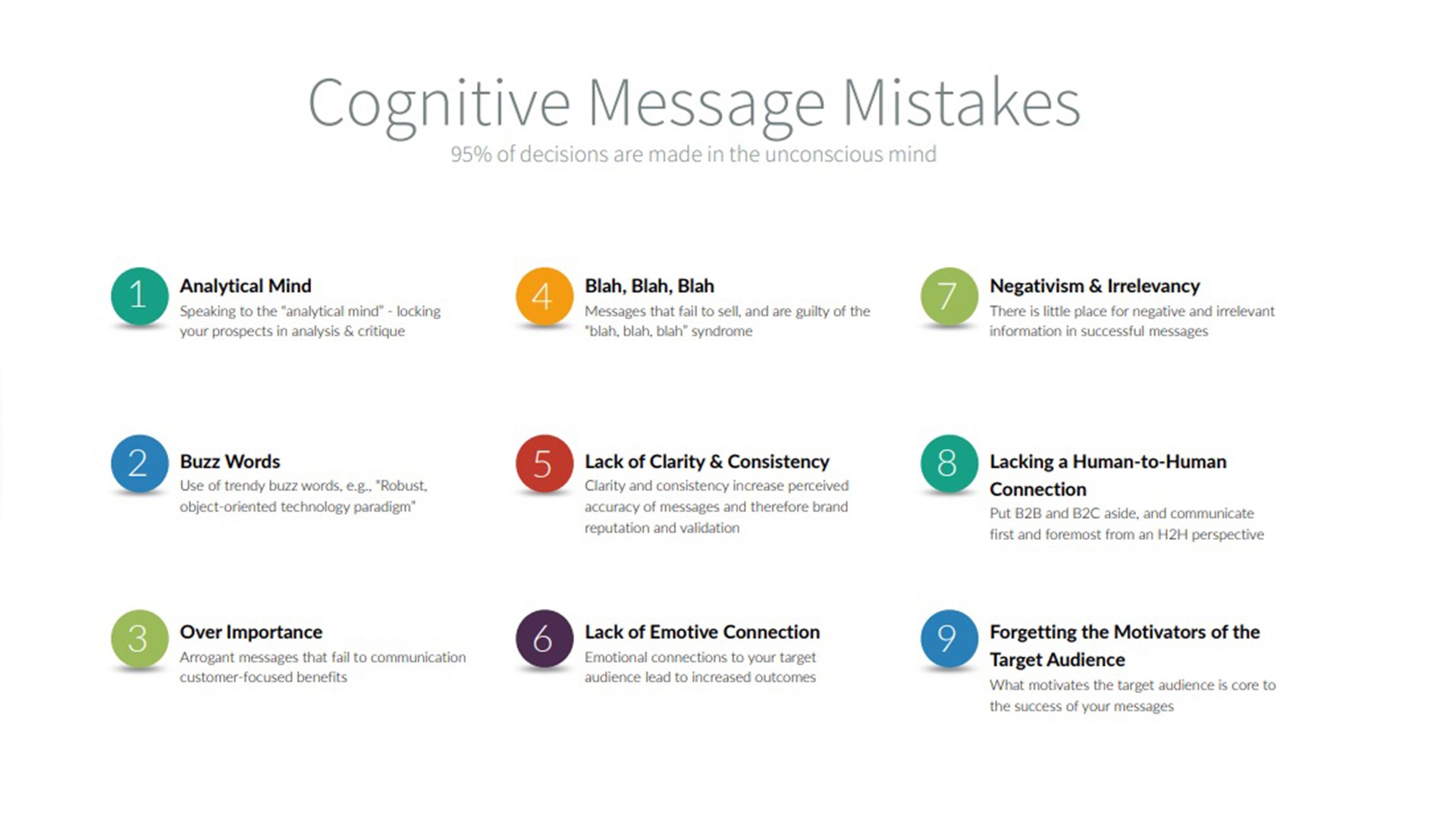9 cognitive messaging mistakes to avoid
How you might be failing to engage the minds of audiences at this critical time.

It’s no secret that we all have a lot on our minds during the COVID-19 pandemic.
If health and economic concerns weren’t enough, your audience is also barraged with changing news, guidance and updates from organizations they interact with. It’s harder than ever to break through the noise and earn their engagement and trust.
Neuroscience may hold the key. During Ragan’s Brand Storytelling in a Crisis Virtual Conference, Volume PR Founder and President Elizabeth Edwards explained that by considering how our unconscious minds process information, communicators can make messages stick better in a time marked by fear and uncertainty.
She points to nine common mistakes communicators make when forming messages:

According to Edwards, these common errors don’t take into account the unconscious mind and its role in decision-making. In turn, they make attention, recall, engagement and conversions more difficult to obtain. By checking messages and content to see if they commit any of these, communicators can better ensure they’re connecting with audiences on a meaningful level at a time filled with distractions and mental overload.








Can you post a clearer version of this graphic? It’s completely unreadable. Thanks!
Thanks, Jessica. We’re trying to get a hold of a more hi-res version of this image. If you email me @ robbyb@ragan.com, I’ll be happy to send you the graphic as an attachment as well.
Can you post the graphic is straight-up content? It’s tiny and impossible to read without magnifying my computer to 200%. And the graphic doesn’t add any particular value that a regular bulleted list wouldn’t provide.
Hi there – I’m happy to share the slide directly with anyone interested @ hello@engagementsciencelab.com . Cheers to effective engagement!